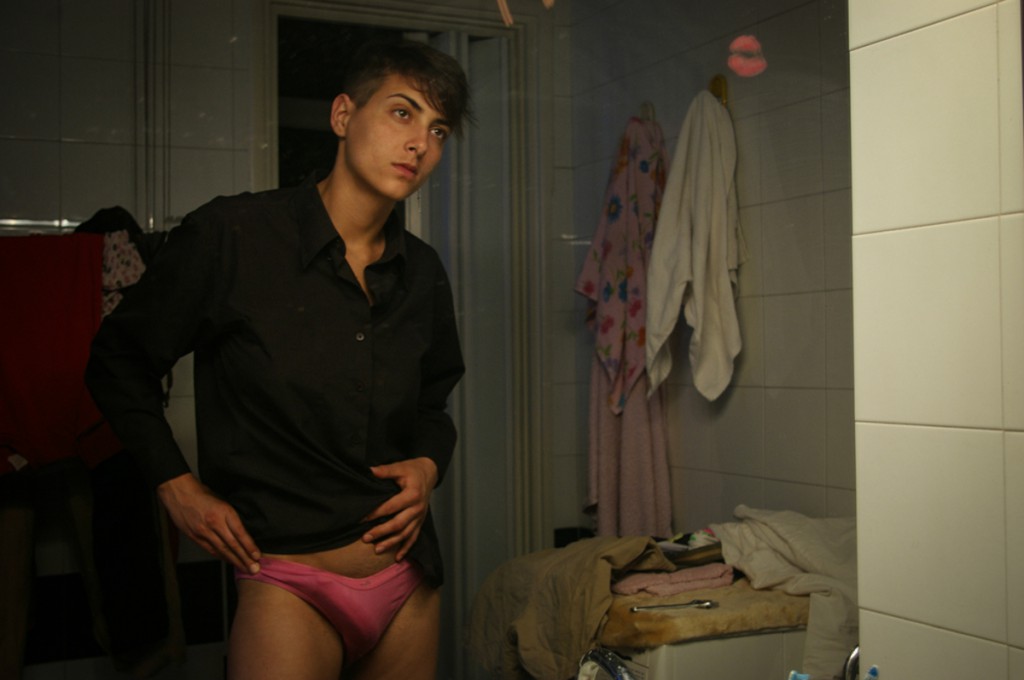BY: JESSICA BURDE
Fifty percent of them will have attempted suicide at least once by their 20th birthday, according to the Youth Suicide Prevention Program. Politicians, religious leaders, and business owners can endlessly debate the validity of trans* rights, but the moral outrage over someone of the “wrong” gender using a public bathroom is meaningless when a child’s survival hangs in the balance.
Recently I had a chance to talk with three mothers who have been, in their own ways, fighting for their transgender children.
Jamie and Theresa
Jamie never suspected Theresa might be a girl.
“I knew very little about gender-non conforming kids or transgender kids; before she talked to me I thought that being transgender was fine, but an adult thing.”
For Jamie, transgender was associated with the words gay and lesbian, thanks to the common acronym LGBT. She didn’t know that being transgender has nothing to do with sexuality, or that people who are trans may first express their true gender while they are still children.
Theresa’s coming out to her mother as a girl was a shock, but Jamie’s love for her child allowed her to respond with support and acceptance. Then when bedtime rolled around, Jamie turned to the Internet for a crash course in what to do when the child you’ve raised as a boy tells you she is really a girl. Jamie offered Theresa some hand-me-down girl’s clothes that were being saved for Theresa’s younger sister.
“It made her really, really happy, and when I saw her face light up I knew that I had to figure out what all this meant and fast so that I could help her.”
Unfortunately, figuring out what it meant wasn’t easy. Most of the available information on being transgender is framed around adults. While there is some information available about “gender-variant” children, most of it assumes that the child may “revert” to their original gender. From the beginning, Theresa was adamant that she was a girl, and has never wavered in that knowledge. So information about gender-variance wasn’t much help for Jamie trying to navigate her daughter’s new identity. Even finding a therapist who had experience with transgender children was challenging.

Luckily for Theresa, the social transition seems to have been relatively painless. Jamie didn’t say anything about problems with the school, and Theresa has friends now that welcome her as she is.
In spite of her self-doubts, Jamie wouldn’t change the way she has handled Theresa’s transition. As a boy, Theresa had a number of problems stemming from her deep unhappiness with herself. The underlying dissatisfaction with herself was a major concern for Jamie and Theresa’s stepfather, who is also fully supportive of Theresa’s transition.
“The huge reward has been seeing my child become the happy, confident version of herself. The transition I’ve seen is my child go from anxious and self-hating to happy and self-confident. All parents want their child to be happy.”
Mary and Chris
Unlike Jamie, Mary had some warning that her “daughter” might be a boy. She had seen a 20/20 special about trans children and when Chris was 7 or 8, long before he came out to her, Chris had asked Mary how she would feel if he had a sex change operation. However, like Jamie, Mary didn’t know about social transitioning. She told Chris he would need to wait until he was older to transition.
Chris was 12 when he came to Mary and said that if he had to live as a girl for one more day he would kill himself. Not knowing what else to do, Mary simply said, “Okay.” That very night, Mary took Chris out shopping for boys’ clothes.
However, Mary did wonder if this might be a phase, and at first didn’t tell anyone. When Chris came out to his father, Mary knew he was serious, and helped him come out to his grandparents. Mary latched on to helping Chris through his transition, and didn’t let go until she had their pediatrician, school, and everyone else on board to help. Slowly, Chris’ depression and self-hatred started to heal.
However, faced with the choice of a live son or a dead daughter, Chris’ father couldn’t cope. While he tried to be supportive, he couldn’t get past the belief that Chris’ identity, as a boy was just a phase. He bowed out of Chris’ life, giving Mary full control of Chris’ medical care and upbringing. Chris hasn’t seen his father in two years.
For Mary, her nominal co-parent’s abandonment was something of a relief.
“I was lucky that he gave me medical control, I’ve known parents where both still had custody and they fought over getting medical intervention. It was better for Chris that he just walked away. But I do still know a fair amount of parents who are supportive and are still together, which is much better.”

For something that started out for a child ready to kill himself, the transition has been a blessing for both Mary and Chris. Chris has learned to be open about his true nature, a lesson Mary says she eventually learned from her son. They met many wonderful people and have had a chance to help many others. One of the best surprises was the way other children at Chris’ school reacted to his transition.
He started 7th grade as she and Grace and came back after Christmas as he and Chris, and [the other students] saying, “we’re here for you.”
Kari and Eve
Eve was a stereotypical boy growing up. She loved running around outside, playing and fishing, and never gave her parents any reason to suspect she might be a girl. Kari was understandably shocked when at 15 Eve came out to her as transgender. Kari had never known anyone who was trans and didn’t know what to think. For Kari, the situation was even harder because Eve didn’t want her father to know yet. Kari had to choose between keeping her daughter’s confidence or withholding information from her husband. Kari kept silent, and when Eve was ready to tell her father, he understood why Kari couldn’t say anything.
Kari and Eve’s situation was unique in another way. When Eve came out, the family lived in Iowa, but Kari had taken a job in New York. With work only allowing Kari to come home once every few weeks, she had time alone to process and try to understand what her child was going through. Like other parents I spoke with, Kari questioned Eve’s identity initially, asking herself, “She’s only 15 years old, how does she know? How does she come to this thought process, she’s never shown any sign of?” On several occasions, Kari just broke down and cried as she tried to come to terms with this massive change in whom she thought her child was and would become. But she kept her tears private, not wanting Eve to think that her mother was upset with her. On the contrary, Kari was fully accepting of Eve’s identity, but terrified of what it would mean for her daughter in the current social landscape.
…not only with her transition but the pain she’ll go through throughout her life with the way people treat her, and that’s hard for any parent to come to grip with.
Eve’s transition was different from Chris and Theresa’s because of how late she came out.
Eve used to hate looking at herself in the mirror. [She would] say, ”I hate it, I’ve got a beard and a moustache, and I hate this….” Younger children can start the blockers, delay the puberty, and then if they choose to live as a man, they can go off the blockers and go through puberty.
Kari struggled to help Eve deal with the way her body was rebelling, turning into an image completely contrary to her own self-perception. She held Eve while she cried, and listened without judgment when Eve spoke of wanting to kill herself. Her awareness of the suicide rate for transgender teenagers made an already difficult time into a parent’s version of a living hell.
While Eve wasn’t a happy child before her transition, it was the initial process of transitioning that brought out the deepest bought depression. It was only as she began to open up and become expressive about her true self that she has returned to the “normal” state of emotion Kari remembers.
“The first things I notice for all these kids [trans* children] are the smiles on their faces. When they’re forced to be who they are not they never smile, and then it’s the smile that happens first. To see that smile is like the biggest positive ever.”
For Other Parents
As the world becomes more aware and open to the possibility of trans children, more parents find themselves facing the joys and challenges of helping their children navigate a world that rejects their identity. Each of the mothers I spoke with had their own hard-won advice for parents following in their footsteps. Expressed in different ways, these women said many of the same things: trust your child to know what is right for them, learn everything you can, and get your child the help they need. Know that the choice of supporting or rejecting your child’s gender may very well be the choice between having a live daughter or a dead son.
Mary invites parents of trans* and gender variant children to reach out to her at


